It was a beautiful day today in the bay area, so I headed up to Napa and the Pope Valley. I was scouting some new territory for a small flower moth, Heliolonche celeris, that apparently is waiting for more contiguous nice weather to emerge. This season has been a bit tardy because of all of the cold and rain, but I hold out hopes for a successful return visit in a few weeks. However, I did come across a handful of beautiful microleps. All of these moths are in the genus Adela and family Adelidae (or some would say Incurvariidae). They are commonly known as “fairy moths” because they appear to dance over patches of flowers – which apparently fairies love to do. It looked like males were defending a small area, with two to three at a time, twirling around each-other a few inches above the blossoms. I assume these dances were territorial because no mating was observed. While females have long antennae, the males take it to excess. I collected a nice series but I haven’t nailed down the species yet – how many do you see? Thankfully, all of the Adelidae were covered in a 1969 paper by Jerry Powell, who also happens to live down the street from me.
After looking through the collections here at the CAS, and reading the monograph, it looks like most of these are Adela trigrapha. It is a common Adelid of the San Francisco Bay area and most of the coastal ranges of CA. Variation is noted to be considerable, with broken and unbroken bands as well as variation of the red on the crown. The other Adelid is easily ID’d to Adela flammeusella.
Adela trigrapha Zeller 1875
(more images after break)
Adela trigrapha Zeller 1875
Adela flammeusella Chambers 1876
Adela trigrapha Zeller 1875
Adela trigrapha Zeller 1875
Adela trigrapha Zeller 1875
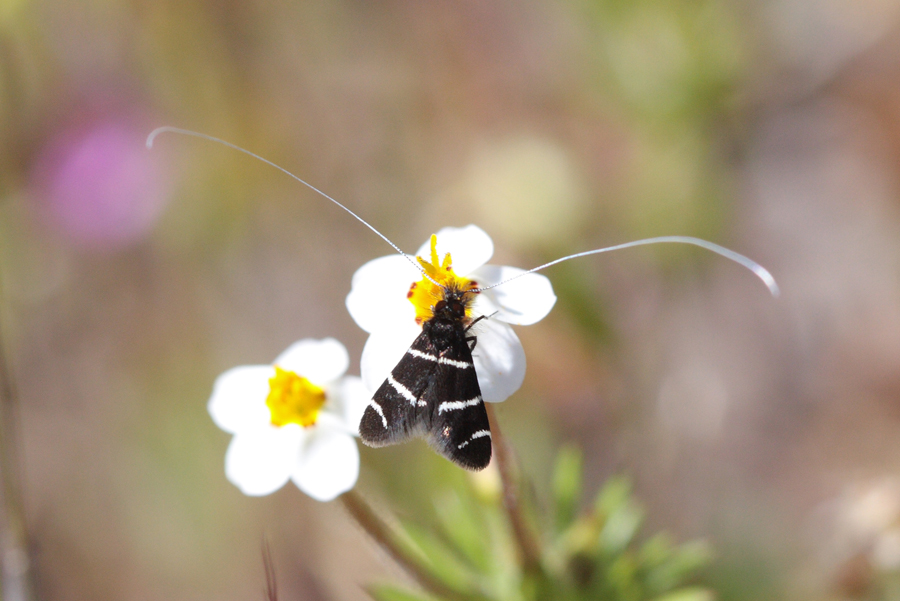
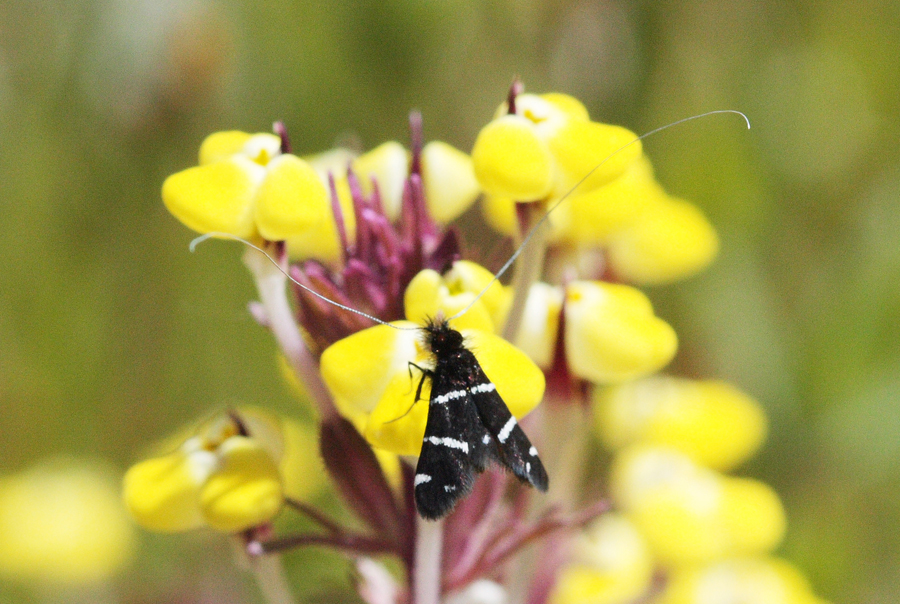
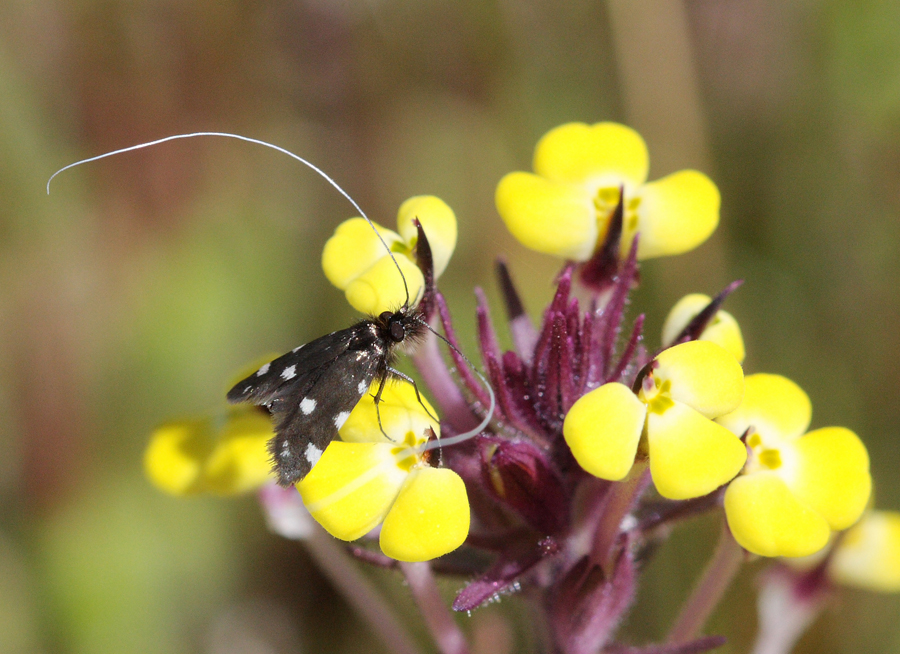
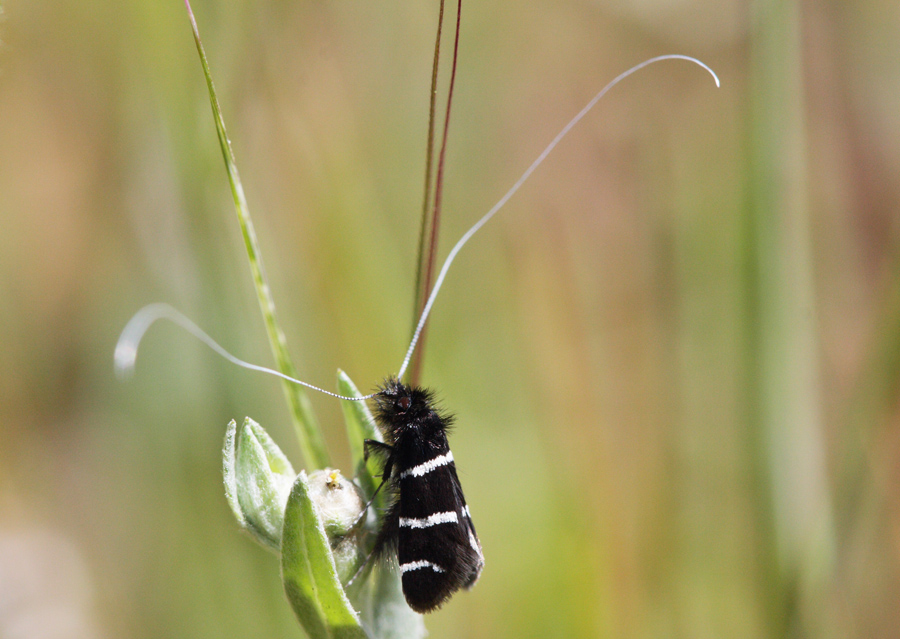
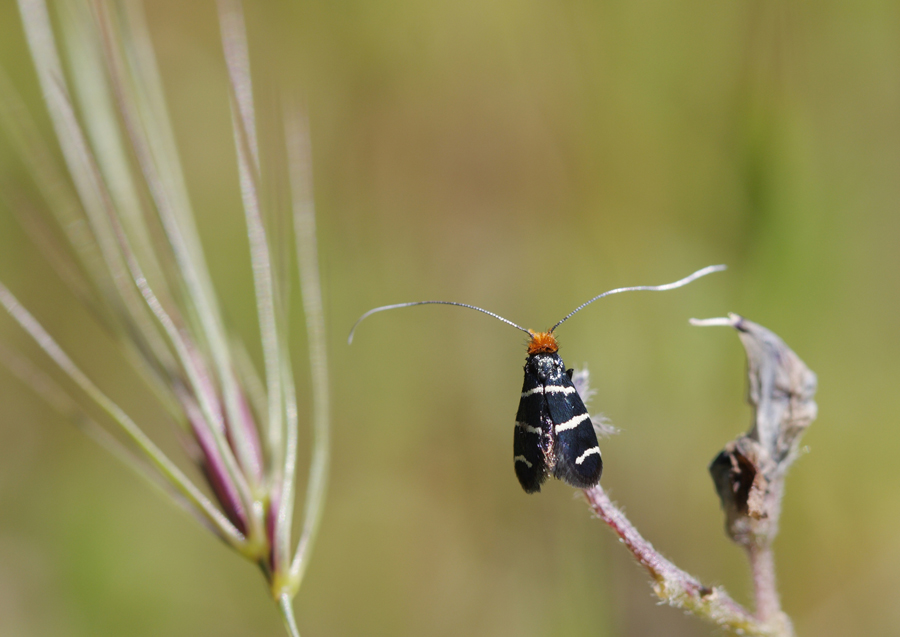
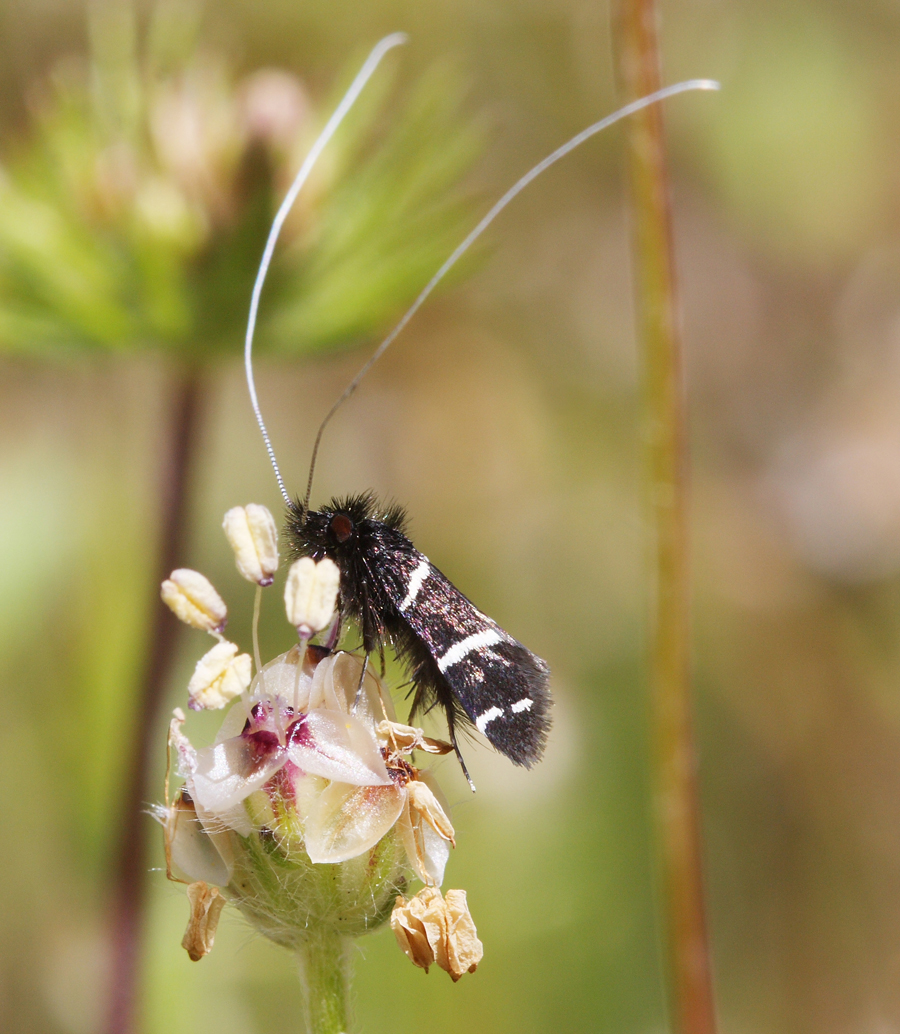

Must be at least three species – what about the one with the orange head? The markings are like those in photos 1 and 4, but the antennae don’t look as long and I’m wondering if this is sexual dichroism.
I hung out with a moth guy in my early days, who introduced me to “Incurvariidae.” They’re quite small as I recall – must be quite a challenge to mount.
Chris
Very unusual moth. To me it looks like a stag horn moth. How big is the wing span?
Yes I’m thinking 3 as well. I thought dimorphism at first too, but reading Powell it sounds like there are 2 species that are both supposed to have orange on the head to varying degrees. Not to mention, they shouldn’t overlap in range. It’s the ones without the orange that are more puzzling! I’ll just have to go over to Berkeley and have Jerry put names on them.
I kind of cheat by mounting my micros upside down – and I’m trying to illustrate exactly how I do it so I can add it to the techniques section.
And as far as micros go these guys are big! About 12mm wing tip to wing tip.
I love these little moths!…used to see them often while hiking along the coastal trails at Pt Reyes, on Calochortus tolmei.
Not which species though, perhaps you can put a name to it?
http://bobabela.com/California-Nature/Insects-Spiders/7263324_oXTZd#466874794_R7RiX
Updated, looks like they are all the same. Bob – your moth would also be A. trigrapha.
Ah, so two species rather than three – the post apical band can be complete or broken, but what about the orange head?
Thanks Chris.
It’s still confusing. Males have the orange, which varies considerably. There is still a chance some of these are Adela eldorata, which more commonly has a bright orange crown. I’ll still have Powell sort these specimens out and tell me the verdict.
All the monograph says in regards to the red on A. trigrapha is “… and a few to several orange scales at the back of the crown.” No note on dimorphism.
[…] Grinter, at The Skeptical Moth, goes moth tasting in the Napa Valley and photographically samples some intoxicating vintages of Adelidae fairy […]
[…] Adela trigrapha (Moth Tasting in Napa) […]
[…] since I saw Chris Grinter’s beautiful photographs, I have wanted to see (and possibly photograph) the tiny little moths known as fairy moths (family […]